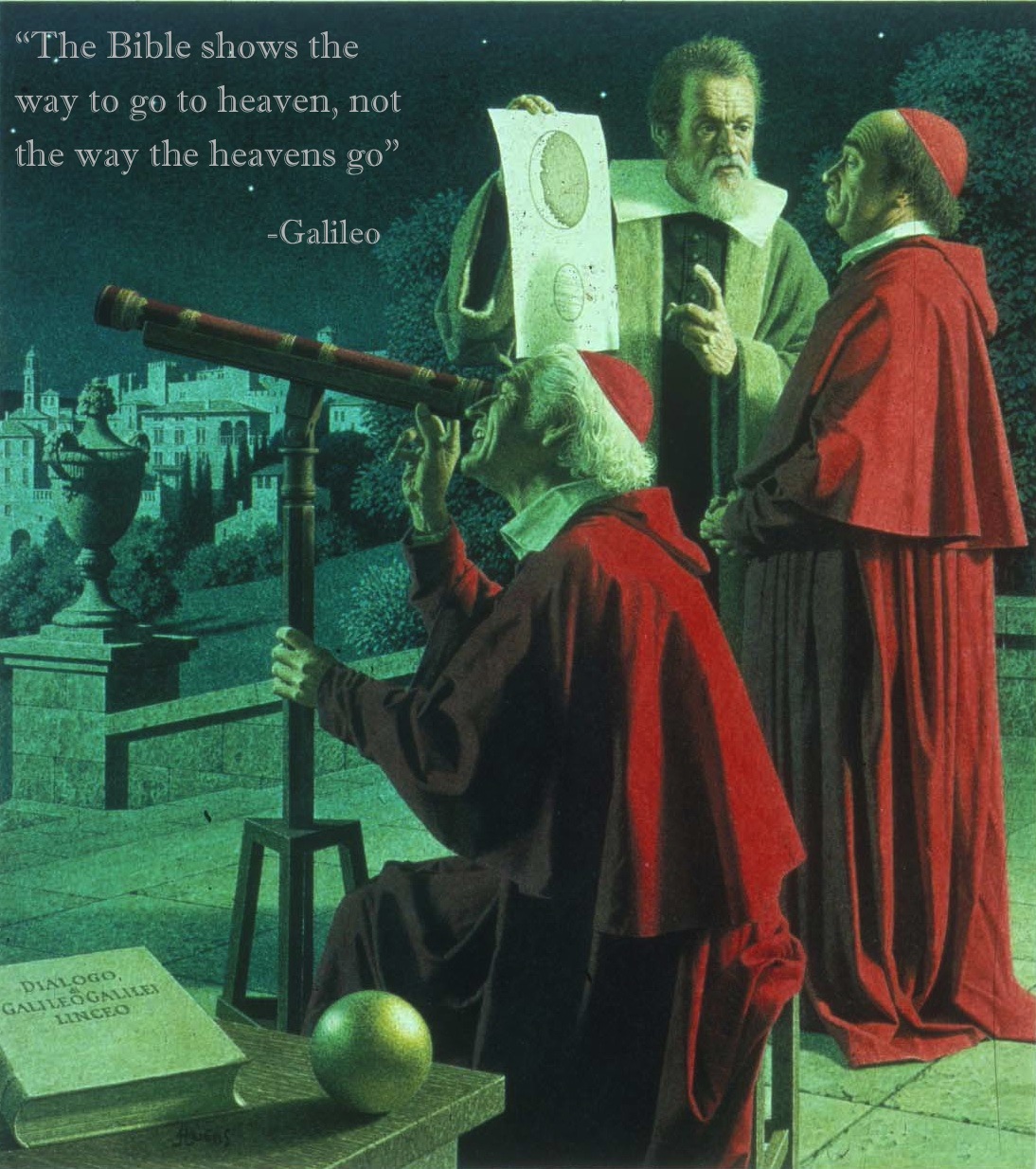History Schmistory: February 13. “I give up.”
Thursday, February 13, 2025
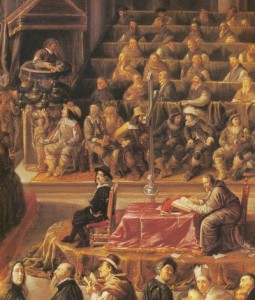 1633: After a grueling twenty-three day trip, Italian astronomer Galileo Galilei, seventy years old and suffering from excruciating sciatica, arrives in Rome for his trial before the Inquisition. Having failed to convince the cardinals with his evidence, Galileo was to be tried for heresy for professing and detailing his belief that Earth revolves around the Sun. In order to avoid a particularly torturous jail sentence, the mark of any bona fide Inquisition, Galileo had no choice but to submit, renouncing his beliefs and denying a lifetime of work so he could go back home and live out his remaining days in peace.
1633: After a grueling twenty-three day trip, Italian astronomer Galileo Galilei, seventy years old and suffering from excruciating sciatica, arrives in Rome for his trial before the Inquisition. Having failed to convince the cardinals with his evidence, Galileo was to be tried for heresy for professing and detailing his belief that Earth revolves around the Sun. In order to avoid a particularly torturous jail sentence, the mark of any bona fide Inquisition, Galileo had no choice but to submit, renouncing his beliefs and denying a lifetime of work so he could go back home and live out his remaining days in peace.
History Schmistory: February 13. We Do Covers!
Thursday, February 13, 2025
February 13, 1867. The Polluted River Zenne gets a cover-up.
History Schmistory: February 12. Bloody Mary, insane, beheads Lady Jane…
Wednesday, February 12, 2025
 1554: Lady Jane Grey is beheaded for treason, only the year after reluctantly claiming the throne of England for nine days, the shortest stretch on the throne in the history of England. Jane was known as one of the most intelectual women of her time, fluent in French, Italian, Latin, Greek, and Hebrew. She was certainly worthy of the throne and would likely have been one of England’s most upstanding rulers. But “Bloody Mary” would have none of it. The Princess, Mary Tudor rallied an army of supporters to march into London and usurp the throne for herself. Unfortunately, Jane’s supporters were lacking the spine to stand up to Mary, and one by one they swore allegiance to her. Mary wasted no time, locking Jane up in the Tower of London for political expediency. Since Jane was also a Protestant, Mary had no trouble elevating her sentence to treason, and a few months later, one of England’s most distinguished female minds was gratuitously chopped from its body. That’s seriously messed up. But really that’s the only thing Bloody Mary was good at.
1554: Lady Jane Grey is beheaded for treason, only the year after reluctantly claiming the throne of England for nine days, the shortest stretch on the throne in the history of England. Jane was known as one of the most intelectual women of her time, fluent in French, Italian, Latin, Greek, and Hebrew. She was certainly worthy of the throne and would likely have been one of England’s most upstanding rulers. But “Bloody Mary” would have none of it. The Princess, Mary Tudor rallied an army of supporters to march into London and usurp the throne for herself. Unfortunately, Jane’s supporters were lacking the spine to stand up to Mary, and one by one they swore allegiance to her. Mary wasted no time, locking Jane up in the Tower of London for political expediency. Since Jane was also a Protestant, Mary had no trouble elevating her sentence to treason, and a few months later, one of England’s most distinguished female minds was gratuitously chopped from its body. That’s seriously messed up. But really that’s the only thing Bloody Mary was good at.
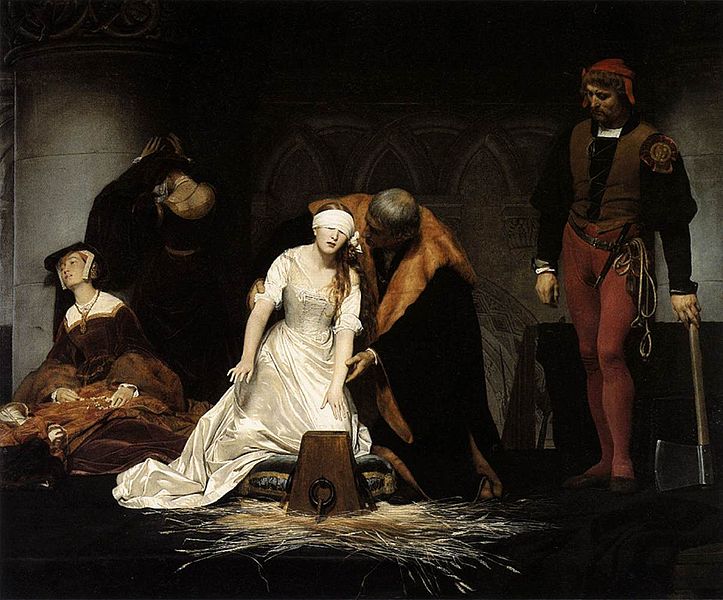
History Schmistory: February 12. Don’t Scream!
Wednesday, February 12, 2025
February 12, 1994. Edvard Munch’s most iconic painting is stolen.
History Schmistory: February 11. Science fiction meets Television, and the “robot”.
Tuesday, February 11, 2025
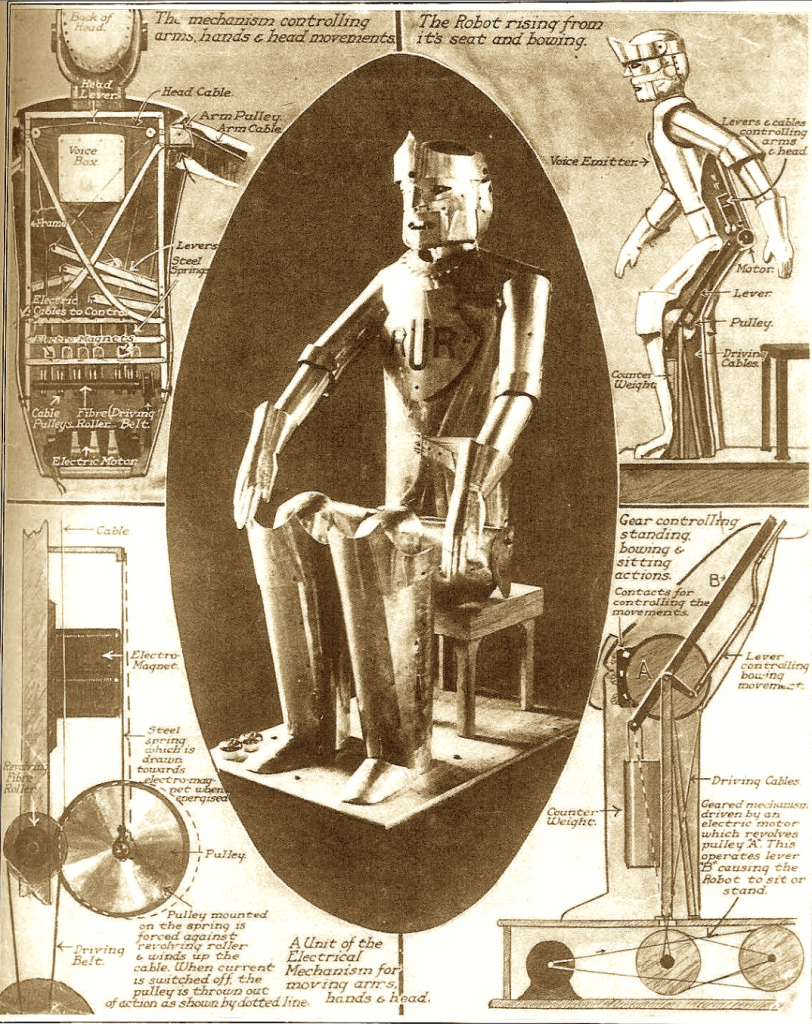 1938: BBC Television produces the world’s first ever science fiction television program, an adaptation of the Karel Capek play R.U.R., (Rossum’s Universal Robots.) The play, first produced in Prague in 1921, introduced the term “robot” to the English language and to science fiction as a whole. The adaptation begins in Rossum’s humanoid factory, where subservient machines called robots are built. These popular robots were so incredibly lifelike and efficient, able to think comprehensively and make their own decisions, that they were often mistaken for humans. Of course, the robots at this point have begun to rebel against their owners and by the end they wipe out the entire human race.
1938: BBC Television produces the world’s first ever science fiction television program, an adaptation of the Karel Capek play R.U.R., (Rossum’s Universal Robots.) The play, first produced in Prague in 1921, introduced the term “robot” to the English language and to science fiction as a whole. The adaptation begins in Rossum’s humanoid factory, where subservient machines called robots are built. These popular robots were so incredibly lifelike and efficient, able to think comprehensively and make their own decisions, that they were often mistaken for humans. Of course, the robots at this point have begun to rebel against their owners and by the end they wipe out the entire human race.
-Oh yeah, spoiler alert! Pretty sure you saw that coming, though.
Well, R.U.R. is really where it all started!
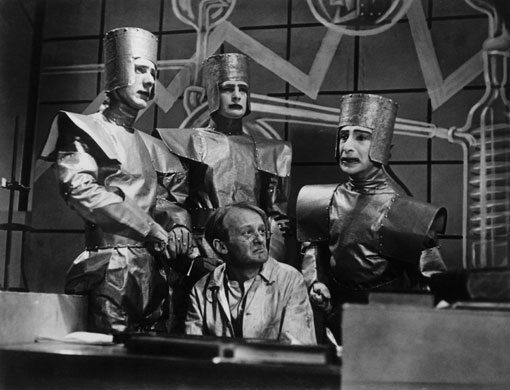
History Schmistory: February 11. The Senate Show!
Tuesday, February 11, 2025
February 11, 1794. First US Senate session opens to the public.
History Schmistory: February 10. Now that’s a riot.
Monday, February 10, 2025
1355: The St. Scholastica’s Day riot breaks out in Oxford, England, leaving 63 scholars and as many locals dead in three days. And it all started with a bar brawl. Yeah, Oxford was a rough campus.

Now That’s Progress! Harnessing the power of lighting.
Monday, February 10, 2025
 Okay, so we’ve all heard the Ben Franklin-kite flying-electricity story enough times, but what some of us may not realize is that those experiments led to one of the most important inventions in history. One that has arguably saved more lives than any other: The Lightning Rod. Pachow, pachow!
Okay, so we’ve all heard the Ben Franklin-kite flying-electricity story enough times, but what some of us may not realize is that those experiments led to one of the most important inventions in history. One that has arguably saved more lives than any other: The Lightning Rod. Pachow, pachow!
 You see, most building materials like wood and drywall and… roof, are horrible conductors of electricity, so when hit with a streaking supercharge of juice, they tend to burst into flames. This can cause quite a predicament for those contained within. Back in Franklin’s day most homes and buildings were constructed with wood based materials, so it was common for lightning to ruin a perfectly good evening for many an unlucky household. The Lightning Rod offered a simple and effective solution. A pointed metal rod placed at the highest point of a structure would attract and conduct the energy a lightning bolt produces and pass it by wire down the side of a structure and into the ground where a much larger rod absorbs the bulk of the load. Genius.
You see, most building materials like wood and drywall and… roof, are horrible conductors of electricity, so when hit with a streaking supercharge of juice, they tend to burst into flames. This can cause quite a predicament for those contained within. Back in Franklin’s day most homes and buildings were constructed with wood based materials, so it was common for lightning to ruin a perfectly good evening for many an unlucky household. The Lightning Rod offered a simple and effective solution. A pointed metal rod placed at the highest point of a structure would attract and conduct the energy a lightning bolt produces and pass it by wire down the side of a structure and into the ground where a much larger rod absorbs the bulk of the load. Genius.

 Back in the day, lightning rods were very decorative and most contained glass bulbs, which, when shattered, offered clear evidence of their awesomeness.
Back in the day, lightning rods were very decorative and most contained glass bulbs, which, when shattered, offered clear evidence of their awesomeness.
So next time you find yourself in a tall building, a dwelling on a hill, an airplane, or a yacht or something, during a crazy lighting storm, give a quick thanks to Mr. F for keeping you perfectly safe.
History Schmistory: February 10. Computer Date Checkmate!
Monday, February 10, 2025
February 10, 1996. Computer defeats a Chess Grandmaster.
History Schmistory: February 9. Lazy-ball.
Sunday, February 9, 2025
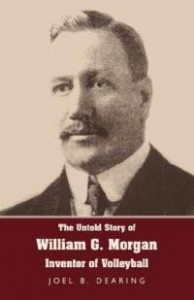 1895: William G. Morgan creates a game called mintonette, soon to become volleyball, -because mintonette just sounds silly. 🙂
1895: William G. Morgan creates a game called mintonette, soon to become volleyball, -because mintonette just sounds silly. 🙂
Having known and worked for James Naismith, the inventor of basketball, Morgan felt confident he could create his own, less physically demanding sport for slightly older kinesthetic folk like himself. His original rules were quite different from those we know today. For one thing there was no limit to the number of players you could have as long as both sides were even. Also, each side could hit the ball as many times as they wanted before sending it over the net. Zzzzzzzzzzzzz. Thankfully, volleyball has become a much more athletically intriguing sport than it once was. Seriously, how effective could your team possibly be in those dresses?
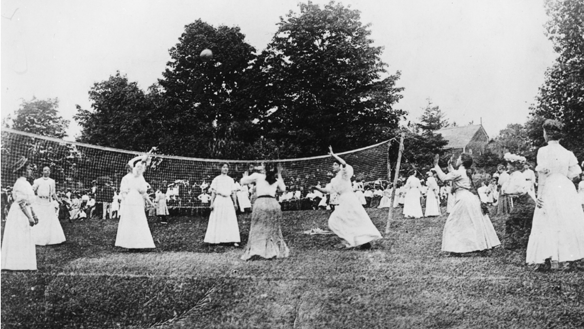
Wonder what Morgan would have to say about how things have progressed since his day? …

